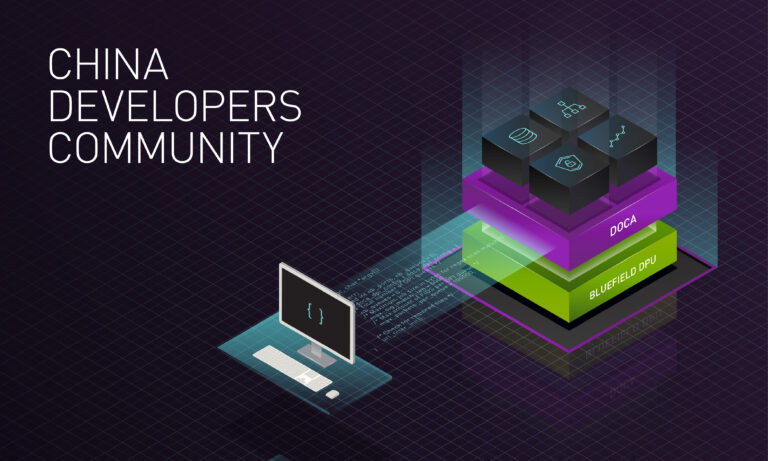submitted by /u/RaunchyAppleSauce
[visit reddit] [comments]
Hi all, Im trying to train a TensorFlow model to differentiate between a British one pence coin and a two pence coin.
I have 50 Photos for each at the dimension size 255 X 255, all photos are in focus and taken in natural sunlight.
Here is the training code I am using
And here is the testing code I am using:
I am pretty new to this and only following YouTube Tutorials, any advice would be fantastic!
Thanks all!
submitted by /u/Adhesive_Hooks
[visit reddit] [comments]
Consider my input data.shape = [batch_size, 10_images, img_size, img_size, 1]
I want to extract patches of patch_size of each 10 images in a particular batch.
After that combine patches of all these 10 images as a whole in sequential order.
So that my output is like, output.shape = [batch_size, 10_images * patch_size * patch_size * 1]
Please help.
submitted by /u/ashwani_iitp
[visit reddit] [comments]
Obtain operators list
I am currently working on a tensorflow 1 project which I would like to migrate to tensorlfow 2, the project builds a tf model and then extracts the operations used in the model with the following code
graph = tf.get_default_graph()
operations = graph.get_operations()
I can’t find a way to do the same using tensorflow2, does anyone know how to do so? thanks!
submitted by /u/ostrichfear
[visit reddit] [comments]
How to have better results at forecasting?
I am a beginner in machine learning and I would like to forecast some pollution data.
I am using a dataset with values for pm2.5, pm10 and pm1 as features and I am predicting the values for the pm2.5. I built an LSTM network but the predicted values are quite from the real values.
What I used:
win_length=2 batch_size=32 num_features=3 train_generator=TimeseriesGenerator(x_train,y_train,length=win_length,sampling_rate=1,batch_size=batch_size) test_generator=TimeseriesGenerator(x_test,y_test,length=win_length,sampling_rate=1,batch_size=batch_size)
`
The used model is LSTM:
model=tf.keras.Sequential() model.add(tf.keras.layers.LSTM(200,input_shape=(win_length,num_features),return_sequences=True)) model.add(tf.keras.layers.LeakyReLU(alpha=0.5)) model.add(tf.keras.layers.LSTM(128,return_sequences=True)) model.add(tf.keras.layers.LeakyReLU(alpha=0.5)) model.add(tf.keras.layers.Dropout(0.3)) model.add(tf.keras.layers.LSTM(64,return_sequences=False)) model.add(tf.keras.layers.Dropout(0.3)) model.add(tf.keras.layers.Dense(1))
This is the data snippet and how the predicted values look compared to the original pm2.5 values: prediction snippet
How to increase the accuracy of the forecast? I am also attaching the jupyter notebook, which contains all the analysis: https://github.com/creativitylab/dataset/blob/main/pollution%20data.ipynb
submitted by /u/MobileInformal460
[visit reddit] [comments]
Scaling large language models has resulted in significant quality improvements natural language understanding (T5), generation (GPT-3) and multilingual neural machine translation (M4). One common approach to building a larger model is to increase the depth (number of layers) and width (layer dimensionality), simply enlarging existing dimensions of the network. Such dense models take an input sequence (divided into smaller components, called tokens) and pass every token through the full network, activating every layer and parameter. While these large, dense models have achieved state-of-the-art results on multiple natural language processing (NLP) tasks, their training cost increases linearly with model size.
An alternative, and increasingly popular, approach is to build sparsely activated models based on a mixture of experts (MoE) (e.g., GShard-M4 or GLaM), where each token passed to the network follows a separate subnetwork by skipping some of the model parameters. The choice of how to distribute the input tokens to each subnetwork (the “experts”) is determined by small router networks that are trained together with the rest of the network. This allows researchers to increase model size (and hence, performance) without a proportional increase in training cost.
While this is an effective strategy at training time, sending tokens of a long sequence to multiple experts, again makes inference computationally expensive because the experts have to be distributed among a large number of accelerators. For example, serving the 1.2T parameter GLaM model requires 256 TPU-v3 chips. Much like dense models, the number of processors needed to serve an MoE model still scales linearly with respect to the model size, increasing compute requirements while also resulting in significant communication overhead and added engineering complexity.
In “Beyond Distillation: Task-level Mixture-of-Experts for Efficient Inference”, we introduce a method called Task-level Mixture-of-Experts (TaskMoE), that takes advantage of the quality gains of model scaling while still being efficient to serve. Our solution is to train a large multi-task model from which we then extract smaller, stand-alone per-task subnetworks suitable for inference with no loss in model quality and with significantly reduced inference latency. We demonstrate the effectiveness of this method for multilingual neural machine translation (NMT) compared to other mixture of experts models and to models compressed using knowledge distillation.
Training Large Sparsely Activated Models with Task Information
We train a sparsely activated model, where router networks learn to send tokens of each task-specific input to different subnetworks of the model associated with the task of interest. For example, in the case of multilingual NMT, every token of a given language is routed to the same subnetwork. This differs from other recent approaches, such as the sparsely gated mixture of expert models (e.g., TokenMoE), where router networks learn to send different tokens in an input to different subnetworks independent of task.
Inference: Bypassing Distillation by Extracting Subnetworks
A consequence of this difference in training between TaskMoE and models like TokenMoE is in how we approach inference. Because TokenMoE follows the practice of distributing tokens of the same task to many experts at both training and inference time, it is still computationally expensive at inference.
For TaskMoE, we dedicate a smaller subnetwork to a single task identity during training and inference. At inference time, we extract subnetworks by discarding unused experts for each task. TaskMoE and its variants enable us to train a single large multi-task network and then use a separate subnetwork at inference time for each task without using any additional compression methods post-training. We illustrate the process of training a TaskMoE network and then extracting per-task subnetworks for inference below.
To demonstrate this approach, we train models based on the Transformer architecture. Similar to GShard-M4 and GLaM, we replace the feedforward network of every other transformer layer with a Mixture-of-Experts (MoE) layer that consists of multiple identical feedforward networks, the “experts”. For each task, the routing network, trained along with the rest of the model, keeps track of the task identity for all input tokens and chooses a certain number of experts per layer (two in this case) to form the task-specific subnetwork. The baseline dense Transformer model has 143M parameters and 6 layers on both the encoder and decoder. The TaskMoE and TokenMoE that we train are also both 6 layers deep but with 32 experts for every MoE layer and have a total of 533M parameters. We train our models using publicly available WMT datasets, with over 431M sentences across 30 language pairs from different language families and scripts. We point the reader to the full paper for further details.
Results
In order to demonstrate the advantage of using TaskMoE at inference time, we compare the throughput, or the number of tokens decoded per second, for TaskMoE, TokenMoE, and a baseline dense model. Once the subnetwork for each task is extracted, TaskMoE is 7x smaller than the 533M parameter TokenMoE model, and it can be served on a single TPUv3 core, instead of 64 cores required for TokenMoE. We see that TaskMoE has a peak throughput twice as high as that of TokenMoE models. In addition, on inspecting the TokenMoE model, we find that 25% of the inference time has been spent in inter-device communication, while virtually no time is spent in communication by TaskMoE.
A popular approach to building a smaller network that still performs well is through knowledge distillation, in which a large teacher model trains a smaller student model with the goal of matching the teacher’s performance. However, this method comes at the cost of additional computation needed to train the student from the teacher. So, we also compare TaskMoE to a baseline TokenMoE model that we compress using knowledge distillation. The compressed TokenMoE model has a size comparable to the per-task subnetwork extracted from TaskMoE.
We find that in addition to being a simpler method that does not need any additional training, TaskMoE improves upon a distilled TokenMoE model by 2.1 BLEU on average across all languages in our multilingual translation model. We note that distillation retains 43% of the performance gains achieved from scaling a dense multilingual model to a TokenMoE, whereas extracting the smaller subnetwork from the TaskMoE model results in no loss of quality.
 |
| BLEU scores (higher is better) comparing a distilled TokenMoE model to the TaskMoE and TokenMoE models with 12 layers (6 on the encoder and 6 on the decoder) and 32 experts. While both approaches improve upon a multilingual dense baseline, TaskMoE improves upon the baseline by 3.1 BLEU on average while distilling from TokenMoE improves upon the baseline by 1.0 BLEU on average. |
Next Steps
The quality improvements often seen with scaling machine learning models has incentivized the research community to work toward advancing scaling technology to enable efficient training of large models. The emerging need to train models capable of generalizing to multiple tasks and modalities only increases the need for scaling models even further. However, the practicality of serving these large models remains a major challenge. Efficiently deploying large models is an important direction of research, and we believe TaskMoE is a promising step towards more inference friendly algorithms that retain the quality gains of scaling.
Acknowledgements
We would like to first thank our coauthors – Yanping Huang, Ankur Bapna, Maxim Krikun, Dmitry Lepikhin and Minh-Thang Luong. We would also like to thank Wolfgang Macherey, Yuanzhong Xu, Zhifeng Chen and Macduff Richard Hughes for their helpful feedback. Special thanks to the Translate and Brain teams for their useful input and discussions, and the entire GShard development team for their foundational contributions to this project. We would also like to thank Tom Small for creating the animations for the blog post.
 The developer community for NVIDIA DOCA continues to gain momentum around the world.
The developer community for NVIDIA DOCA continues to gain momentum around the world. 
On January 13, NVIDIA hosted an online workshop to engage with the NVIDIA DOCA developer community in China. The core team at NVIDIA and leading partner representatives joined the workshop to discuss the application scenarios of NVIDIA BlueField DPUs and the NVIDIA DOCA software framework for cloud, data center, and edge. The workshop focused on the requirements for DOCA developers in key industries, such as consumer Internet, cybersecurity, and higher education, and designed a plan to expand the DOCA developer community in China.
Since the June 2021 launch of the DOCA community in China, nearly 1,000 developers have registered for the DOCA Early Access Program, accounting for almost half of global registrations. BlueField DPUs and DOCA show great potential for adoption in China, with developer numbers continuing to grow.
In the second half of 2021, NVIDIA has held three online bootcamps to introduce the application and future technology evolution of the BlueField DPU and DOCA in modern data centers. They also explored the software stack, development environment, developer resources, developer guides, and reference applications of the DOCA Software Development Kit (SDK). More than 3,500 developers participated in the bootcamps. At the latest bootcamp, the newest services and applications released with DOCA 1.2 attracted much attention. Technical information and success stories posted on social media and in knowledge communities have many developers and industry professionals excited about future advancements.
NVIDIA is working with leading global platform providers and partners, such as Juniper Networks, Excelero, VMware, and Palo Alto Networks, to integrate and extend solutions based on BlueField DPU and the DOCA software framework. Through the workshop, NVIDIA will help enable developers in China to develop applications in scenarios such as Zero Trust Security, Morpheus AI Security, edge network service platforms, and high-speed distributed storage. A rich developer program in China will be launched in 2022.
DOCA Developer Bootcamp and Virtual Hackathon
Following the hackathons in Europe and North America, NVIDIA intends to host the first spring DOCA Developer Hackathon in China in the second quarter of 2022. Before the hackathon, NVIDIA will host an online bootcamp to teach contestants about BlueField DPU and DOCA programming skills.
NVIDIA will invite teams of developers from partners, customers, and academia to learn, collaborate, and accelerate their software designs under the guidance of NVIDIA expert mentors. The aim is to foster innovative, breakthrough software projects based on BlueField DPU and DOCA 1.2 in high-performance networking, virtualization, cybersecurity, distributed storage, accelerated AI, edge computing, and video streaming processing. The program will empower the developer community in China to create revolutionary data center infrastructure applications and services. After evaluation, NVIDIA will reward outstanding innovation teams.
DPU and DOCA Excellence Center
Leadtek (Shanghai) Information Technology Co., Ltd. and Shanghai Zentek Intelligent Technology Co., Ltd. are highly familiar with NVIDIA products and solutions, including deep learning applications in cloud, data center, and edge scenarios. They have partnered with the NVIDIA Deep Learning Institute to train partners and customers.
As the first group of members of the NVIDIA authorized DPU and DOCA Excellence Center, the two partners have set up their own Excellence Centers and begun their pilots. During the pilots, each partner will independently build and operate a virtual development platform based on the BlueField-2 DPU, establish a third-party DPU development environment, provide an online practice development environment for DOCA developers in China, and contribute to the DPU and DOCA ecosystem with NVIDIA.
The implementation of the DOCA developer program in China will help grow the global DOCA developer community, facilitate talent development, and enhance the capabilities of developers. It will also boost the performance advantages of solutions based on BlueField DPU and the DOCA SDK, and accelerate time-to-market, creating greater value for customers and partners.
Apply now to join the DOCA developer community and get early access to the DOCA software framework.
Growing up in the Philippines, award-winning filmmaker Jae Solina says he turned to movies for a reminder that the world was much larger than himself and his homeland.
The post From Imagination to Animation, How an Omniverse Creator Makes Films Virtually appeared first on The Official NVIDIA Blog.
Single or multiple output for model

I want to predict the genre(s) of the given text. The dataset I am planning on using is this kaggle dataset. While I know how to predict a single genre, I am not sure how to work with a possibility of more than 1 genre if needed.
submitted by /u/Electric_Dragon1703
[visit reddit] [comments]
 Using convolutional neural networks researchers create an algorithm that can quickly calculate global forecasts 4 to 6 weeks into the future.
Using convolutional neural networks researchers create an algorithm that can quickly calculate global forecasts 4 to 6 weeks into the future.
New weather-forecasting research using AI is fast-tracking global weather predictions. The study, recently published in the Journal of Advances in Modeling Earth Systems, could help identify potential extreme weather 2–6 weeks into the future. Accurate predictions of extreme weather with a longer lead time give communities and critical sectors such as public health, water management, energy, and agriculture more time to prepare for and mitigate potential disasters.
Climate change is amplifying the intensity and frequency of extreme weather events, with 2021 shattering storm, heatwave, flood, and drought records across the globe. According to a recent NOAA report, last year the US experienced 20 separate climate-induced weather disasters, each totaling over $1 billion in damage.
Short-term and seasonal weather forecasting can play a large role in decreasing the socioeconomic and human costs of extreme weather. In 2019, meteorologists warned local and national leaders in the Philippines of a torrential rainstorm looming about 3 weeks out. The forecast gave communities time to weatherize structures and evacuate before the Category 4 Typhoon hit, saving lives, and reducing overall damage to the region.
Current weather forecasting relies on supercomputers processing large amounts of global data such as temperature, pressure, humidity, and wind speed. These systems require massive computational resources and take time to process.
Also, according to the authors, the ability to accurately predict forecasts further out, from several weeks to months, decreases significantly.
Looking to improve current weather forecasting the researchers aimed to create a computationally efficient model, capable of accurately predicting upcoming weather called the Deep Learning Weather Prediction (DLWP). Originally introduced in a paper published in 2020, the DLWP relies on an AI algorithm that learns and recognizes patterns in historical weather data based on global grids.
The current work refines the DLWP by training a deep convolutional neural network on two additional data points—temperature at the atmospheric boundary layer and total column water vapor. They also improved the grid resolution at the equator to approximately 1.4°.
Running on a single cuDNN-accelerated TensorFlow deep learning framework on an NVIDIA V100 GPU, the model runs 320 ensemble 6-week forecasts in just 3 minutes. The algorithm can process a 1-week forecast in 1/10th of a second.
The DLWP is able to produce realistic forecasting of weather events such as Hurricane Irma, a Category 4 storm that hit Florida and the Caribbean in 2017. While the speedy DLWP model matches the performance of current state-of-the-art weather forecasters 4 to 6 weeks into the future, it has limitations predicting precipitation and is less accurate in shorter lead times of 2–3 weeks.
According to the study, the DLWP may also prove a valuable tool for supplementing spring and summer forecasts in the tropics, a region that challenges current weather models.
The open-source code is available on GitHub.
Read the study in Journal of Advances in Modeling Earth Systems. >>


